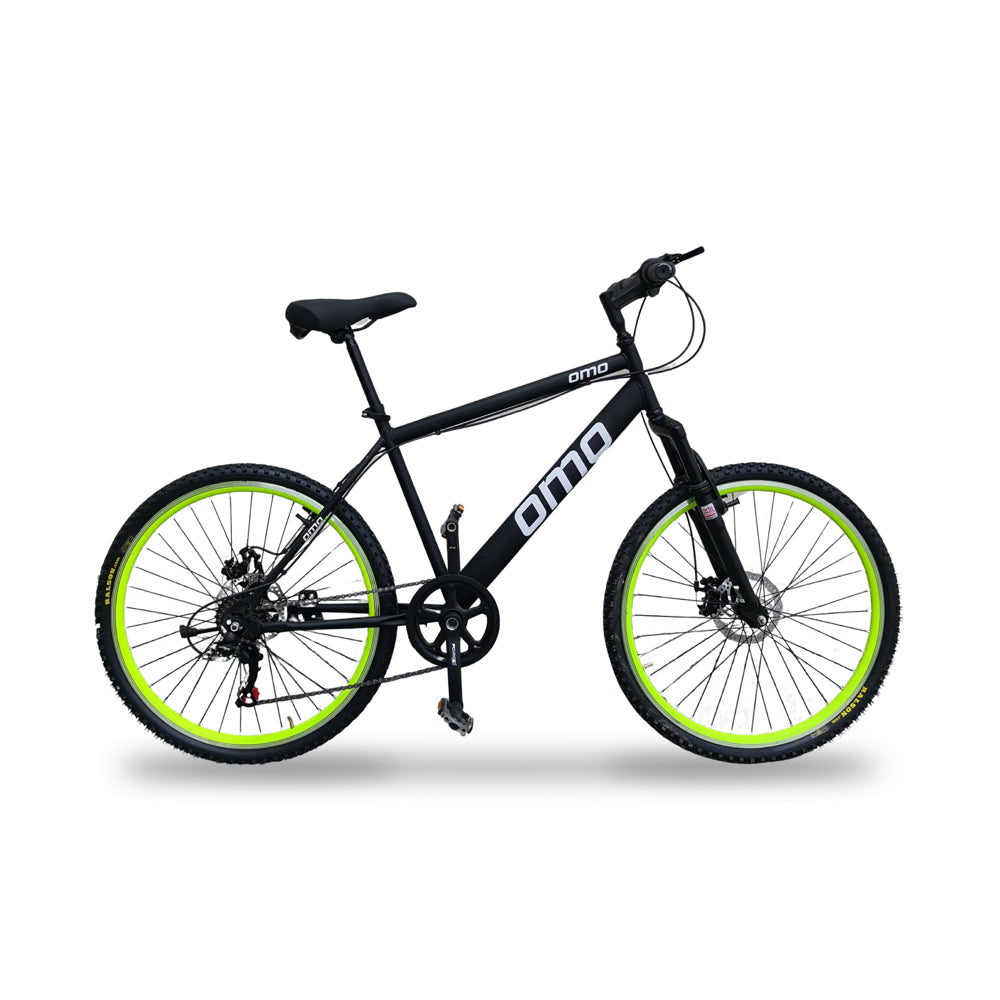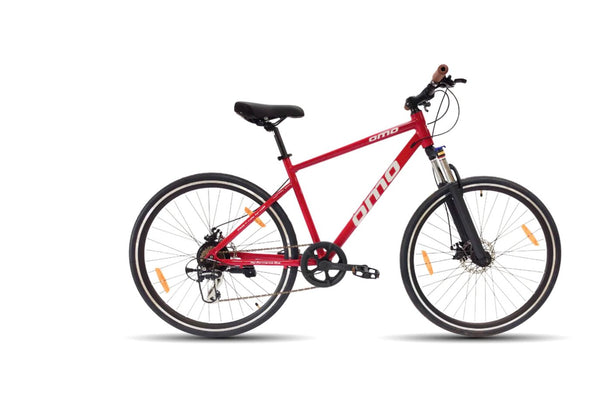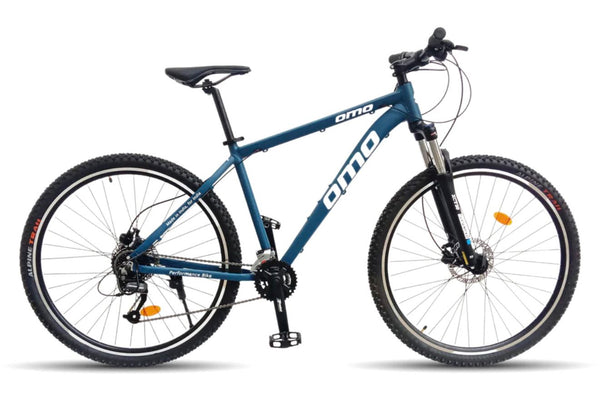Difference Between Hybrid Bike & Mountain Bike (MTB)
OMO BikesShare
With the increasing trend of cycling, varieties of bike models developed to fit riders’ tastes and cycling conditions have mushroomed on the market. Two common types that people most frequently use to consult are Hybrid Cycles and Mountain Bikes or MTBs. Before moving to the main distinctions between these two types of bikes and giving recommendations on which bike to choose based on your intentions and preferences on a bicycle, it’s time to provide you with a list of Hybrid & Mountain Bikes.
What is a Hybrid Bike?
A hybrid Bicycle is a city bike that has the features of a road bike and mountain bike (MTB). It is for a variety of enduro riding conditions, with a lightweight structure, medium-sized tread widths from 1.3 inches to 1.6 inches wide tyres for pave and trails, and a comfortable sitting position for riders. Hybrids come in no-gear and multiple-gear options for different terrains, and rim or disc brake options for safety stopping.
Are you looking for a versatile bike meant to commute on city roads, cycle on rough terrains and even long distances? The OMO Bikes Ladakh Series Hybrid Bikes are designed for comfort on the tarmac and performance over the badlands; thus, you get the best of both worlds. Perfected with lightweight frames, integrated gears and quick-stopping brakes, the Ladakh Series is aimed at riders who seek excitement without necessarily sacrificing functionality.
Ready to Upgrade Your Ride? If you want to bring your cycling experience to the next level then discover the entire OMO Bikes Ladakh Prime Hybrid Bikes now!
What is a Mountain Bike (MTB)?
A Mountain Bike (MTB) is a specially built bike that is made to perform more off-road cycling in rough or trail riding though they are also frequently used for city riding. It is normally a rigid made of a material such as aluminium alloy 6061, steel or carbon fibre with shock absorbers at the front and rear. Mountain bikes are typically defined by wide tyres (2.10 inch to 3 inches wide) with large tread patterns for increased surface grip on earth ground and also rock amongst other terrains. They also have a good variety of gears for high gradients and powerful discs for safety braking in tough terrains.
If you want a bike that is in between road and mountain bikes but with some qualities of both then here they are. Meet OMO Bike's new Hybrid Collection with the best models for any type of ride out there. The OMO Bikes Zozila Prime Mountain Bike is one of the best in the lineup – perfect for city commuting and off-road riding.
Whether it is the daily business commute or the discovery of new routes, these hybrid bikes provide more comfort, more sturdiness and more style.
What is the Difference between Hybrid and Mountain Bike?
Title |
Hybrid Cycles (For City) |
MTB (For Trail or off-road) |
Design and Purpose |
This implied that Hybrid bikes are an amalgamate of Road and Mountain Bikes. While they are best suited to part-commuting, urban cycling, and exercise riding, they fit most terrains quite well because of their adaptability. Hybrid Cycles usually have comfort-oriented positions for the rider and the tyres used in Hybrid Cycles are comparatively thinner than Mountain Bikes. |
Mountain bike specialty is built to enable cyclists to maneuver on a challenging surface ranging from rocky trails, and dirt paths to steep drops. They have a strong build with heavy bar tyres, and shock absorbers for movement that has better adherence on rough terrains. Mountain bikes also have more extended periods of their frame in front of the rider, unlike the hybrids. |
Frame and Construction |
The Hybrid Bike frames are made of light materials such as aluminium or carbon justified by the fact that the bike will be used on roads. These bikes have a different geometry to offer compared to road bikes in a way to save on speed while providing comfort. |
Mountain bicycle frames are rigid constructions, and their production presupposes the usage of aluminium, steel, or carbon. They use such features as reinforced tubing and extra suspension to meet the rough road and trail and jumping challenges. |
Tires and Wheels |
Hybrid Bikes tend to have smoother, narrower tyres that are ideal for tarmac and a little gravel track as well. These tyres have a comparatively lower interlocking rolling friction thereby allowing easy acceleration on smoother ground. |
Mountain bikes have more oversized and rougher tyres than regular bikes to fit on the loose surfaces properly. These tyres afford better traction and stability on off-road but cause more drag on smooth roads. |
Suspension |
Hybrid bikes have little or no suspension, though, unlike mountain bikes, utilizing the shock-absorbing qualities of wider tyres on any minor impacts. This design choice is more efficient on pavements and smoother than on trails, so that is an advantage for them. |
Mountain bikes often feature suspension systems that come in two main types: and then you have hardtail, the one that has only front suspension and then there is full suspension a bicycle with both front and rear suspension. They provide better firming for mountain bikes and enhance better control while riding in tough terrains with many rocks and bumps. |
Gearing and Brakes |
These bicycles normally have the most extensive range of gears appropriate for all sorts of riding, rugged terrains inclusive of the slopes and flats. It often has a rim brake or disc brake for an equal and efficient braking system. |
The mountain bikes come with an advanced number of special gears suitable for the steep terrains and the steep downhills. Many come with disc brakes that give a regular and powerful braking system regardless of the state of the terrain which may be wet and muddy added to it. |
List of Top Bikes |
Can I use a hybrid as a mountain bike?
Hybrid bikes are mainly for urban riding but if we add front suspension to the Hybrid cycle it can be used on rough roads or even on gravel. It is quite a versatile usage of hybrid bikes with medium-range tyres, though if the track is rugged, then mountain bikes are more appropriate. Mountain bikes on the other hand have thicker tyres, which have better grip and are made for use on rough roads trails or off roads. In other words, depending on the nature of the road and the cycling frequency a Hybrid bike may or may not be appropriate to use as the Mountain bike.
Are hybrid bikes good for hills?
That is true, Hybrid bikes are most suitable for hilly terrains. With an appropriate ratio of 2x or 3x, they can be neutralized on steep paved surfaces. Slightly thinner tyres of the hybrid cycle give you faster speed and easier climbing of hills than a mountain bike. However, if roads on the mountain are extremely bumpy or sharp, instead of the speed that a biker is worried about, stability and grip are essentially more of which mountain bike or MTB is ideal for.
Which is faster MTB or hybrid?
Hybrid bikes due to less resistance on the road are faster than MTBs. For reference, a new or beginner cyclist can achieve an average speed of around 14-15 kmph with MTB in city flat roads while they can achieve an average speed of around 17-20 kmph with Hybrid cycles.
Is a Hybrid bike more comfortable than a mountain bike?
The choice of comfort varies from rider to rider and also varies depending on the territory or type of road. Hybrid bikes are easy to pedal they are fast in comparison with mountain bikes but mountain bikes provide better grip and comfort. Taking into account the other difference one can make a sound decision looking at usage and what a rider wants to accomplish.
MTB Vs Hybrid, Which is better for Indian roads?
When it comes to what people consider the modern-day bicycles in India, Mountain bikes or MTBs are the most sold bicycles in India In spite of hybrid being more comfortable as some would find on Indian roads. Thin tyre cycles have been in existence throughout India for many years of time. Old model black colour bicycle, the roadster which was previously a famous bicycle in India, had a thin Tyre and could run on all types of Indian roads. In that case, as per the minds of team Omobikes, hybrid cycles are good for beginners for all Kind of India roads until, not have a very specific need for a Mountain Bike.
Conclusion
Selecting between, a hybrid cycle and a mountain bike depends on what riding style and experience, as well as the type of terrain, that one prefers. Hybrid bikes are very efficient for commuting as well as leisurely cycling on trails and mountain bikes are meant for those intense adventures. Think about what is important to you, what kind of trails you will be experiencing and how much pampering you want so that you can make the right decision that will be followed by many hours of biking.




1 comment
Very informative technical writeup. Reinforcing knowledge for anyone who would wish to learn more about MTBs and hybrid bikes.